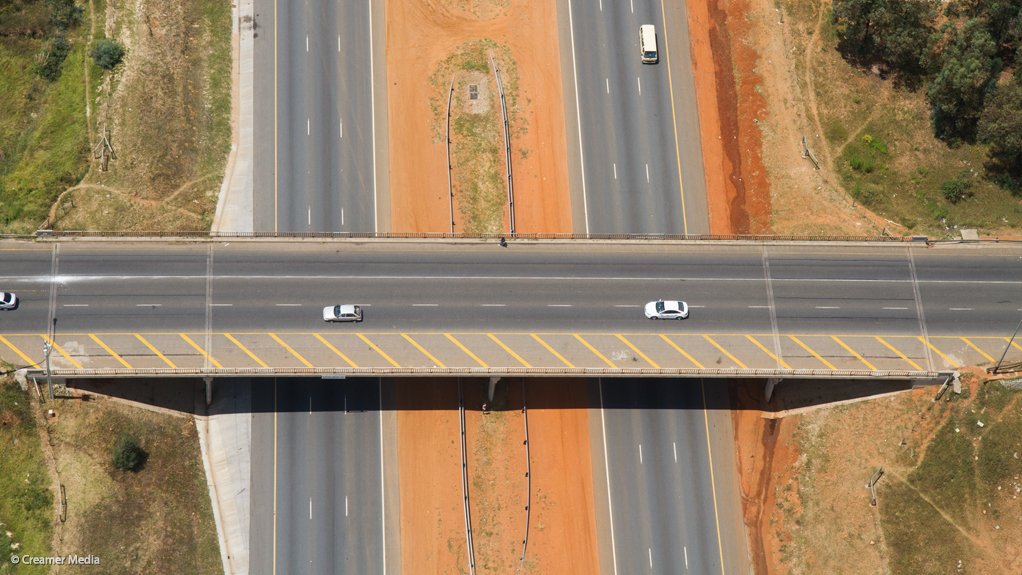Dispute over 5 km road could highlight far bigger road-building problem for Gauteng
A legal dispute over the granting of an environmental authorisation for a 5 km new road, the K148, in southern Gauteng has the potential to highlight serious legal impediments to the development of any new road in the increasingly traffic-congested province.
This, owing to an alleged misalignment between provisions in the Gauteng Transport and Infrastructure Act (GTIA) and prevailing environmental legislation, as well as the reality of progressive encroachment of illegal settlements on to land “frozen” by the Act for future roads.
The matter was scheduled to be heard in the Gauteng High Court between February 26 and 29, and appears to be a simple dispute over the granting in December 2016 of an environmental approval for the K148 by the Gauteng Department of Agriculture and Rural Development (GDARD).
The application has been brought by property company NT55 Investments and Francois Nortje, which together argue that the environmental impact assessment (EIA) should be reviewed and set aside for several reasons, including the fact that the proposed route traverses a sensitive floodplain and ignores the existence of a Transnet fuel pipeline.
However, the applicants will now also argue that the approval flouts Section 9 of the GTIA, which disallows any application for an environmental authorisation in an area where a preliminary design was in place when the provincial legislation was passed in 2001 and later amended in 2003.
A “freezing” of the preliminary designs was implemented to prevent any rezoning of the low-value farmland, owing to a view that significant upward revaluation of the land triggered by rezoning could make it unaffordable for the province to build new roads.
However, the applicants in the K148 case will argue that the legislation also prevents all manner of activities in instances where a preliminary design has been approved, including preventing the Gauteng Department of Roads and Transport from pursuing an EIA to build a road on such land.
Nortje himself ran into these restrictions when seeking to obtain permission for a proposed solar project on farmland in Gauteng that had been frozen in line with the GTIA.
“I had a detailed look at the prohibition clause in the Act to see if solar farms can be established on this land; that is when I realised that no EIA can be granted on such land after a preliminary design has been gazetted,” he explains.
This observation has potentially strengthened Nortje’s legal argument in his ongoing dispute with the GDARD over the K148. The broader implications are potentially dire, however, especially for the development of much-needed new roads in South Africa’s most populous province.
Nortje notes that hundreds of preliminary designs developed by the old Transvaal Provincial Authority, covering about 2 500 km of potential roads, have been frozen since the enactment of the GTIA, which the Constitutional Court confirmed as valid in 2009.
“The effect is that thousands of hectares of land are now basically worthless and will stay worthless except if this Act is challenged successfully,” Nortje asserts, noting that in the intervening period many affected landowners abandoned large tracts of this land earmarked for future roads, which opened the way for illegal dwellings.
“The PWV 13 and 14 alone have at least 10 000 shacks on their preliminary design.
“These two roads are meant to bypass the congested Giloolys interchange,” he notes.
Nortje questions whether it is currently feasible to build any new road in Gauteng, which would be a blow to Premier Panyaza Lesufi’s State of the Province Address commitment to the creation of “efficient road systems that connect people with economic nodes, tourism centres and other provinces”.
He also questions the rationality of legislation that freezes a preliminary design over the full length of the road that cannot be built either because of illegal settlement, or by subsequent environmental legislation.
Comments
Press Office
Announcements
What's On
Subscribe to improve your user experience...
Option 1 (equivalent of R125 a month):
Receive a weekly copy of Creamer Media's Engineering News & Mining Weekly magazine
(print copy for those in South Africa and e-magazine for those outside of South Africa)
Receive daily email newsletters
Access to full search results
Access archive of magazine back copies
Access to Projects in Progress
Access to ONE Research Report of your choice in PDF format
Option 2 (equivalent of R375 a month):
All benefits from Option 1
PLUS
Access to Creamer Media's Research Channel Africa for ALL Research Reports, in PDF format, on various industrial and mining sectors
including Electricity; Water; Energy Transition; Hydrogen; Roads, Rail and Ports; Coal; Gold; Platinum; Battery Metals; etc.
Already a subscriber?
Forgotten your password?
Receive weekly copy of Creamer Media's Engineering News & Mining Weekly magazine (print copy for those in South Africa and e-magazine for those outside of South Africa)
➕
Recieve daily email newsletters
➕
Access to full search results
➕
Access archive of magazine back copies
➕
Access to Projects in Progress
➕
Access to ONE Research Report of your choice in PDF format
RESEARCH CHANNEL AFRICA
R4500 (equivalent of R375 a month)
SUBSCRIBEAll benefits from Option 1
➕
Access to Creamer Media's Research Channel Africa for ALL Research Reports on various industrial and mining sectors, in PDF format, including on:
Electricity
➕
Water
➕
Energy Transition
➕
Hydrogen
➕
Roads, Rail and Ports
➕
Coal
➕
Gold
➕
Platinum
➕
Battery Metals
➕
etc.
Receive all benefits from Option 1 or Option 2 delivered to numerous people at your company
➕
Multiple User names and Passwords for simultaneous log-ins
➕
Intranet integration access to all in your organisation





















